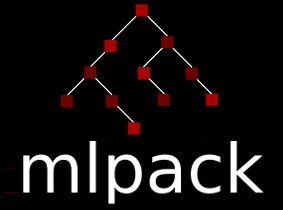|
mlpack
blog
|
Dataset and Experimentation Tools - Week 10 + 11
I've been building a preprocess_validate cli-executable, a simple app that prints out warnings for possible invalid values in a dataset. The output of this program would be the one like below, which is an ultimately what we've been trying to achieve from the beginning.
It took me a longer time to build it because I tried several approaches for making it.
1) First approach I made a class named Validator that acts similar to Imputer class. 2) I found that it is hard to track where the missing values are if there is more than two missing values, since every invalid values will be turned to "nan". So I tried hacking DatasetMapper class so that it could store where the invalid values are. 3) Next decision was to make a new validate_policy which prints out warnings as it goes through the tokens of each dimensions. (though it still has some issues to fix) 4) Lastly to fundamentally fix the problem, I suggest the approach #758.
Current maps object for DatasetMapper can be described as maps of map<dimension, pair<bimap<string, MappedType>, numMappings>> (NumMappings usually being numeric primitive types.)
I think process of having multiple map policies can be simplified by having to two mapping objects. For validation & imputation purposes we could have another mapper (I will call it invalidMaps for now). Which would look like:
invalidMaps and maps serve two different purposes. maps is used as usual (mapping categorical feature to numeric feature). invalidMaps is used as temporary holder for future imputation. Both x and y coordinates have to be stored in order to track the invalid values, since every invalid values are turned to NaNs.
I made commits in this branch to test its usability. The code I am referring to is "validate_policy" written in this commit.. I made it to only test, so the code has still a lot to be improved.
When I run the code with the following dataset using validate policy:
The result matrix produced by the above data by data::Load() becomes:
3 mappings in dimension 0 would indicate that it successfully mapped (a->0, b->1, c->2). NULL was not mapped because I set it as one of the user-defined missingValues.
All nans are mapped using invalidMaps object. And can later be used for printing errors or imputations.
I think this is intuitively a good approach. And this can replace the use of all other mapping policies. I think this way we can make mlpack more user-friendly by reducing introductions to new concepts.
Generated by
 1.8.13
1.8.13
